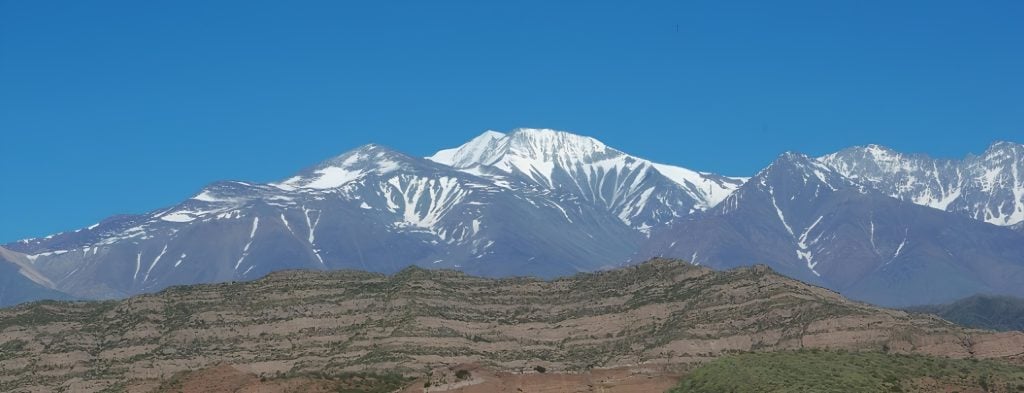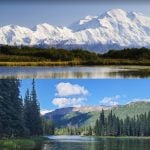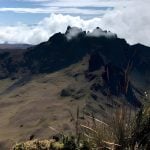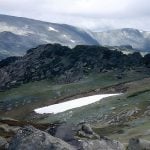Mount Aconcagua: The Summit of South America
Mount Aconcagua, with an elevation of 6,959 meters (22,831 feet), is part of the Andes mountain range and the highest peak in South America. It is also the tallest mountain in both the Western Hemisphere and the Southern Hemisphere, making it one of the most sought-after climbing destinations in the world. Mount Aconcagua: The Summit of South America
Geographic Location
Aconcagua is located in western Argentina, within the province of Mendoza. It lies near the border with Chile and is part of the Aconcagua Provincial Park, a protected area that safeguards its natural beauty. The mountain is a prominent feature of the Andes, which stretch between the Pacific and Atlantic Oceans.
Name and Meaning
The name “Aconcagua” is believed to originate from the local Quechua language. It is commonly interpreted to mean “Stone Sentinel” or “White Peak.” However, there are various etymological interpretations of its name.
Geological and Climatic Features
Aconcagua has a volcanic origin, though it is no longer an active volcano. Its summit is covered in snow and ice, with notable glaciers such as the Polish Glacier and the Eastern Glacier.
The climate on Aconcagua is harsh and unforgiving. Temperatures near the summit can drop to -30°C (-22°F) during winter, and fierce winds are common. The high altitude, extreme cold, and low oxygen levels make climbing the mountain a challenging endeavor.
Climbing and Mountaineering
Aconcagua is one of the Seven Summits, making it a popular goal for mountaineers worldwide. Several routes lead to the summit:
- Normal Route: This is the least technical and the most frequently used by climbers.
- Polish Glacier Routes: These require more advanced technical skills and are more challenging.
Each year, hundreds of climbers visit Aconcagua, but the ascent demands thorough physical and mental preparation. Altitude sickness (AMS) is a common issue at such high elevations.
Natural and Cultural Heritage
Aconcagua is not only a haven for climbers but also a treasure trove for nature lovers. The region boasts a diverse ecosystem, home to pumas, foxes, Andean condors, and various plant species. Additionally, the area holds cultural significance for local communities and is steeped in history.
Conclusion
With its towering height and breathtaking landscapes, Aconcagua is not just the crown jewel of South America but also one of the world’s most magnificent mountains. This majestic peak offers a challenging adventure for climbers and a unique experience for nature enthusiasts alike.
Where is Mount Aconcagua located?
Mount Aconcagua is located in the Andes mountain range, in Mendoza Province, Argentina, near the border with Chile.
How tall is Mount Aconcagua?
Mount Aconcagua has an elevation of 6,959 meters (22,831 feet), making it the highest peak in South America, the Western Hemisphere, and the Southern Hemisphere.
What makes Aconcagua famous?
Aconcagua is part of the Seven Summits, the tallest mountains on each continent. Its status as the highest peak outside Asia attracts climbers and adventurers from around the world.
Is Mount Aconcagua a volcano?
Aconcagua has volcanic origins but is not an active volcano.
What are the main climbing routes?
The two main climbing routes are:
- Normal Route: The least technical and most popular.
- Polish Glacier Route: A more challenging and technical path.
What is the climate like on Mount Aconcagua?
The climate is extremely harsh, with temperatures dropping to -30°C (-22°F) near the summit and strong winds that can make conditions treacherous.
Do you need technical skills to climb Aconcagua?
The Normal Route does not require advanced technical climbing skills, but climbers need to be physically fit and prepared for high altitude. Technical skills are necessary for routes like the Polish Glacier.
What is the best time to climb Aconcagua?
The best time to climb is during the summer months in the Southern Hemisphere, from December to February, when weather conditions are more favorable.
Are there any dangers when climbing Aconcagua?
Yes, the main dangers include altitude sickness, extreme weather, frostbite, and the risk of avalanches on certain routes. Proper acclimatization and preparation are essential.
What wildlife can be found near Aconcagua?
The region around Aconcagua is home to Andean condors, foxes, pumas, and various species of birds and plants adapted to high-altitude conditions.
The Rocky Mountains: The Backbone of North America
Mountains of North America: National Park Paradise
Highest Mountains in the Americas (Highest to Lowest)
About Aconcagua





